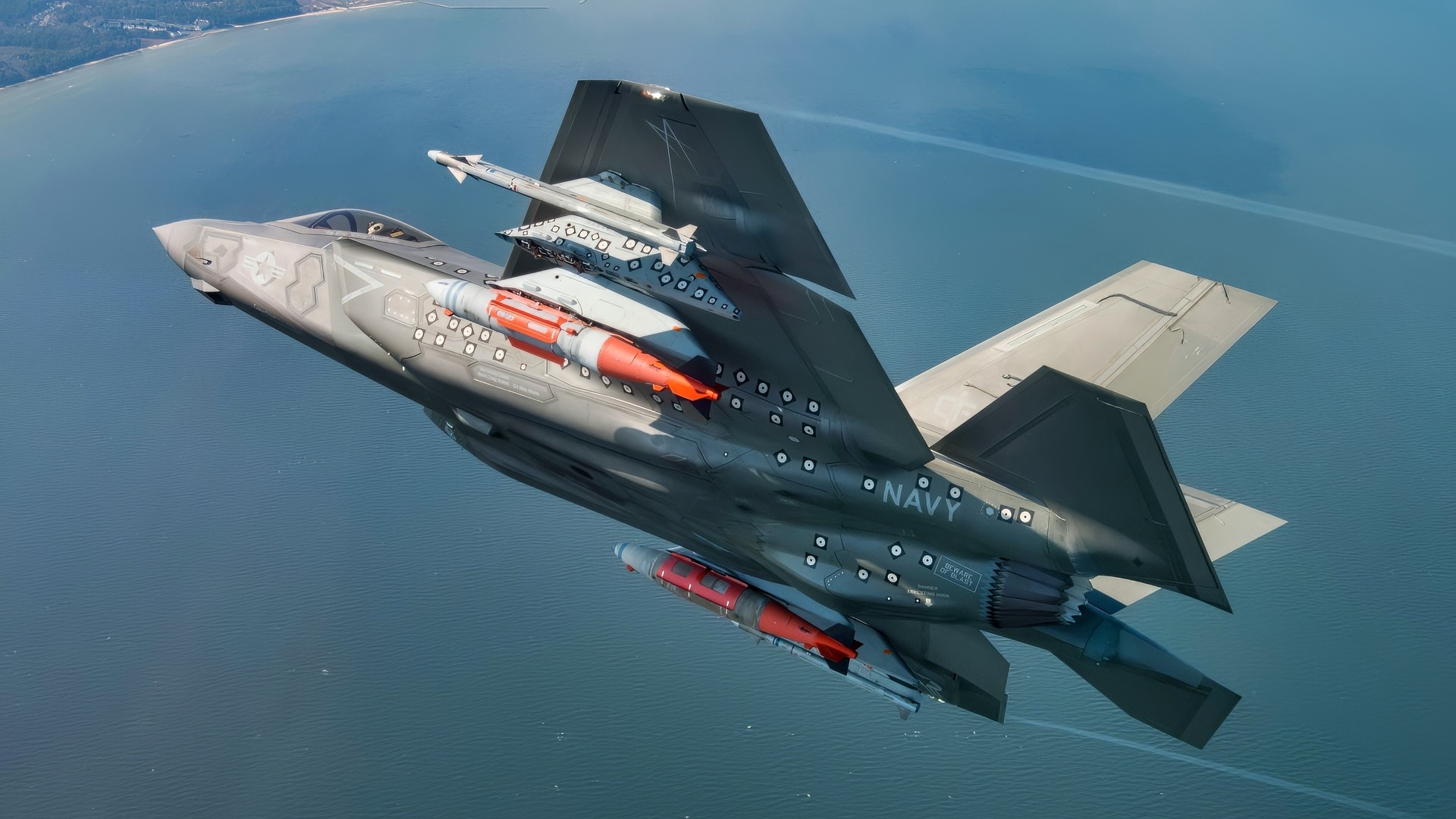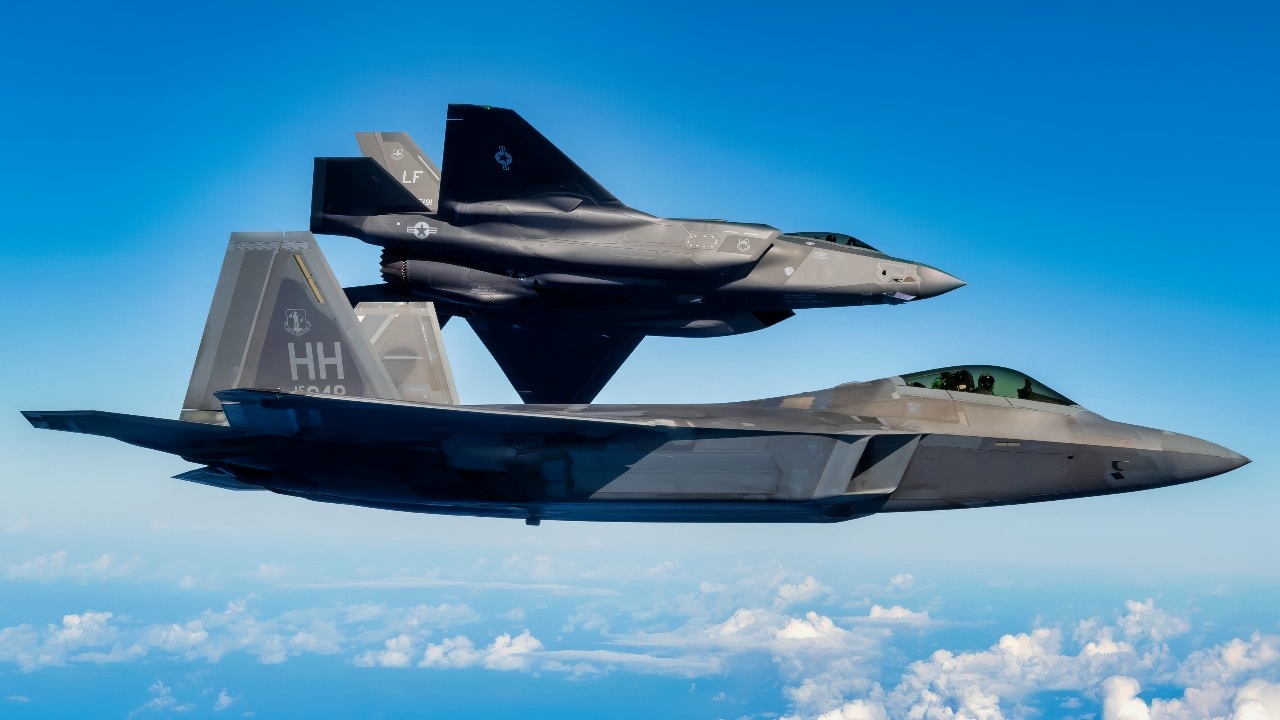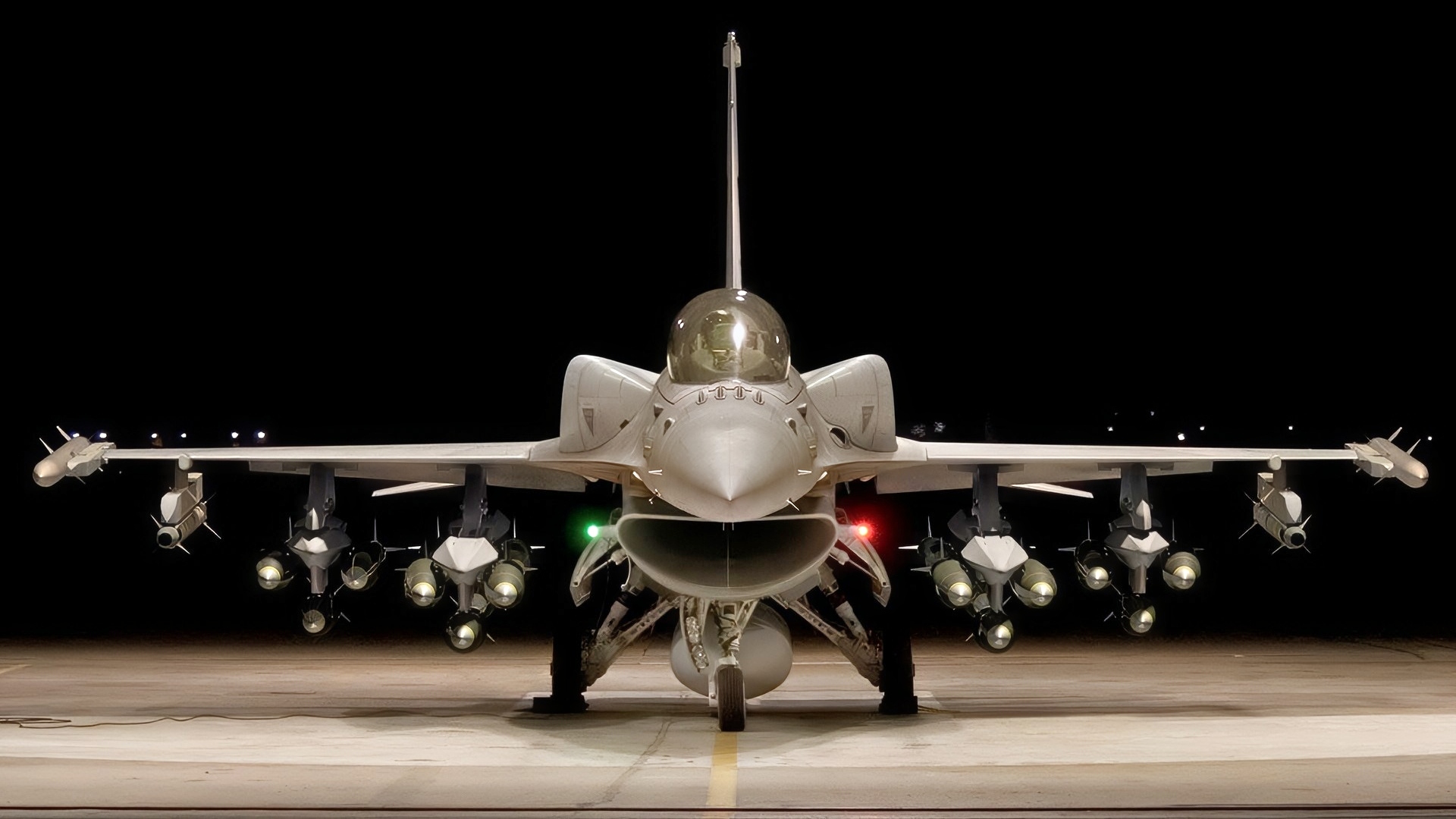Key Points and Summary – Greece is buying 20 F-35s (Lot-20) for about $8.6 billion, with deliveries targeted from 2028, to complement its F-16V fleet and transform the Hellenic Air Force’s reach, survivability, and ISR.
-The F-35’s stealth, sensor fusion, and electronic warfare sharpen air policing and intercept missions across Greece’s vast coastline and islands while deepening NATO interoperability.

The final SDD Test flight CF-2 Flt 596 was piloted by BAE Test pilot Peter Wilson, April 11, 2018, from the F-35 Pax River Integrated Test Force. The F-35C completed a mission to collect loads data while carrying external 2,000-pound GBU-31 Joint Direct Attack Munitions (JDAM) and AIM-9X Sidewinder heat-seeking missiles. (Photo courtesy of Lockheed Martin)
-As a software-driven “flying computer,” the jet can share data with legacy fighters today and guide autonomous “loyal wingman” drones tomorrow.
-Beyond combat power, Athens expects training, exercise, and industrial benefits through Lockheed Martin’s European supply chain—making the F-35 both a tactical upgrade and a strategic bet on allied deterrence.
Greece Is Getting F-35s: See How They Are In Love With the Fighter
Greece hasn’t really been in the international news cycle since the days of its near economic collapse in 2009 and subsequent years of the sovereign debt crisis.
It’s known for its vacations and ancient historical ruins, and is popular with tourists.
Greece is a NATO member and has maintained a complex relationship with its sometimes ally, rival, and neighbor, Turkey. Greece is unlikely to invade any country in the future.
However, there is a requirement to defend its extensive shoreline and numerous islands.
That means it needs a modern fighter jet for air policing and intercepting enemy airplanes that stray too close to its Air Defense Identification Zone.
The Hellenic Air Force punches above its weight, and to maintain its scrappy reputation, it wants to fly F-35 Lightning II stealth jets.
20 F-35s Are On the Way in Three Years
Indeed, Greece will acquire 20 F-35s, possibly as soon as the end of 2028, in a deal valued at $8.6 billion.
That seems like a far-off date, but the Greeks can’t wait to have this prestigious weapon of war. Greece is the 19th partner country for the F-35.
That is a fantastic number of air forces that Athens is now working with.

An F-35A Lightning II banks away from an F-22 Raptor Feb. 6, 2020, near the Hawaiian Islands. F-35 Airmen from Luke Air Force Base, Ariz., temporarily relocated to Joint Base Pearl Harbor-Hickam, Hawaii, to join other flying squadrons in exercise Pacific Raptor. Every training mission of the exercise was carried out by total-force teams from the Air Force’s Active, Reserve and Air National Guard components. (courtesy photo)
That shows the global reach of the American practice of “fighter plane diplomacy.”
The Greeks have ample interoperability potential with the F-35. They will be able to participate in large-scale NATO aerial exercises and use the F-35 to their heart’s content.
The F-35s that Greece will receive are part of Lot 20 and are scheduled to be produced at Lockheed Martin’s plant in Fort Worth, Texas, in 2027.
Great Transition from the F-16V Viper and F-16 Fighting Falcon
This will supplement the Hellenic Air Force’s current supply of F-16V Vipers and F-16 Fighting Falcons.
The pilots of the air force will need some new training that they can acquire in the United States. But the aviators must be excited at getting a chance to fly F-35s.
The “stud” pilots will have the opportunity to make speedy sorties, conduct stealth flights, and execute numerous high-G maneuvers that will surely excite them.
It’s All About Allies
Since the Greek military is tiny, working with allies in NATO is extremely important. Albania, Bulgaria, and Turkey are all in the neighborhood and NATO members.
The Greeks believe alliances are an essential part of their grand strategy. Thus, the F-35 is not only a tactical and operational warplane, but it could also be considered strategic for the Greeks.
The F-35 Is One ‘Smart’ Machine
Since the F-35 is a “flying computer” that sucks up intelligence, surveillance, and reconnaissance data, it can share that type of analysis with the F-16Vs and F-16s.
This is another selling point for the Lightning II. Additionally, the air force will benefit from enhanced electronic warfare capabilities, which will improve its survivability.

F-16V Viper Lockheed Martin Image.
The F-35 can “grow” with the Hellenic Air Force.
The platform is completely upgradable, and as the service branch matures and is enhanced with new capabilities, the F-35 can continue to improve over time.
Use As a Drone Mothership
One interesting aspect of the F-35 is its ability to team with unmanned craft. It will soon be able to mate with Collaborative Combat Aircraft – drones made in the United States that can bring more punch and intelligence collection to friendly forces.
The Greeks can take advantage of this “drone quarterbacking” mode and eclipse future modernization needs that capitalize on unmanned flight.
The F-35 provides them with a multi-layered, networked capability that is crucial when responding to a maximum-level threat environment.
There are also other incentives for Greece to have F-35s. The country could gain from its relationships with America and Lockheed Martin. That means someday, the Hellenic Air Force could conduct research and development for the F-35.
“Greece is undertaking impressive modernization efforts to improve its security, and Lockheed Martin is honored by its vital role in supporting the most advanced interoperable capabilities that enable Greece to stay ahead of growing threats. The F-35 program is an engine for economic progress across partner nations, and in Europe, Lockheed Martin is building a network of industrial partners to ensure local capability, increase integrated deterrence and contribute to the European economy. In fact, 25 percent by value of every F-35 built is produced in Europe. In Greece, Lockheed Martin remains committed to industry and offers long-term partnerships that include the creation of highly skilled jobs and investments in research and academia,” according to Gary North, vice president for customer requirements at Lockheed Martin Aeronautics.
The F-35 purchase is thus an excellent development for Greece. The stealth jet will enhance Greece’s standing with NATO, protect its borders, enable more robust military exercises, utilize the F-35 as a “flying computer” and “drone quarterback,” and gather intelligence that can be shared with other aircraft and command and control centers. Greek brain power will be potentially used by the Americans that could create job opportunities for Athenians.
It’s an exciting time to be a Greek fighter pilot. After being chosen for initial training in the United States, the top pilots can compete for the F-35 role.
This will enhance morale in the Hellenic Air Force and establish an environment where new aircraft can maintain Greece’s sovereignty and deter adversaries, while improving relations with NATO allies in the region.
What’s not to love about this deal?
About the Author: Brent M. Eastwood
Brent M. Eastwood, PhD is the author of Don’t Turn Your Back On the World: a Conservative Foreign Policy and Humans, Machines, and Data: Future Trends in Warfare plus two other books. Brent was the founder and CEO of a tech firm that predicted world events using artificial intelligence. He served as a legislative fellow for US Senator Tim Scott and advised the senator on defense and foreign policy issues. He has taught at American University, George Washington University, and George Mason University. Brent is a former US Army Infantry officer. He can be followed on X @BMEastwood.
More Military
Canada Is ‘Full Steam Ahead’ on F-35 Stealth Fighter
Why Does Turkey Have So Many Main Battle Tanks?
‘Cracked Barrels’: The U.S. Navy’s Big Railgun Failure Explained in Just 2 Sad Words
‘Had No Chance’: The Montana-Class Was the 71,000-Ton Battleship Destined to Fail
‘Captain, We Smacked It Another Submarine’: British and French Nuclear Missile Subs Collided










